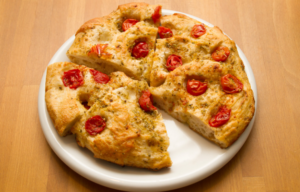Unlock the truth: is bread flour self-raising or plain?
What To Know
- Bread flour does not contain any leavening agents, so using it in place of self-rising flour will result in a flat, dense bread.
- The higher protein content of bread flour will result in a chewier texture, while the baking powder in self-rising flour will give the bread a slightly lighter texture.
- As a general guideline, start by adding 3 cups of water to 6 cups of bread flour and adjust as needed to achieve a dough that is slightly sticky but not wet.
When embarking on the culinary adventure of baking bread, one crucial question arises: “Is bread flour self-rising or plain?” Understanding the distinction between these two types of flour is essential for achieving the perfect loaf of bread. In this comprehensive guide, we will delve into the depths of bread flour, unraveling its properties and clarifying its self-rising or plain nature.
What is Bread Flour?
Bread flour is a high-protein flour specifically designed for baking bread. It contains a higher percentage of protein (12-14%) compared to other types of flour, such as all-purpose flour (9-11%). This higher protein content results in a stronger gluten formation, which is crucial for creating the structure and elasticity of bread dough.
Is Bread Flour Self-Rising?
The answer to this question is a resounding no. Bread flour is not self-rising. Self-rising flour contains baking powder and salt, which are leavening agents that cause the dough to rise during baking. Bread flour, on the other hand, does not contain any leavening agents and requires the addition of yeast or other leavening ingredients to achieve the desired rise.
Why Use Bread Flour for Bread?
Despite not being self-rising, bread flour is the preferred choice for baking bread due to its high protein content. The strong gluten formation it creates results in a dough that is strong, elastic, and able to hold its shape during baking. This leads to bread with a chewy texture, a crisp crust, and a well-developed flavor.
Types of Bread Flour
There are two main types of bread flour:
- High-gluten bread flour: Contains the highest protein content (14-15%) and is ideal for breads that require a strong structure, such as bagels, sourdough, and artisan loaves.
- Regular bread flour: Contains a slightly lower protein content (12-13%) and is suitable for a wider variety of breads, including sandwich bread, rolls, and pizza crust.
Can I Substitute Bread Flour for Self-Rising Flour?
No, you cannot directly substitute bread flour for self-rising flour. Bread flour does not contain any leavening agents, so using it in place of self-rising flour will result in a flat, dense bread. If you do not have self-rising flour, you can make your own by adding 1 teaspoon of baking powder and 1/4 teaspoon of salt to 1 cup of all-purpose flour.
Can I Substitute Self-Rising Flour for Bread Flour?
Yes, you can substitute self-rising flour for bread flour in a pinch. However, keep in mind that the bread will have a slightly different texture and flavor. The higher protein content of bread flour will result in a chewier texture, while the baking powder in self-rising flour will give the bread a slightly lighter texture.
Final Note: The Plain Truth
In the realm of bread baking, bread flour reigns supreme as the plain, non-self-rising flour that delivers exceptional results. Its high protein content empowers it to create doughs with the strength and elasticity necessary for crafting the perfect loaf of bread. While self-rising flour may offer convenience, it cannot replicate the unique qualities that bread flour imparts to bread.
Frequently Asked Questions
Q: Can I use bread flour to make other baked goods, such as cakes or cookies?
A: Yes, bread flour can be used in other baked goods, but it may result in a denser texture than using all-purpose flour.
Q: How much water should I add to bread flour?
A: The amount of water needed will vary depending on the type of bread you are making and the humidity level in your environment. As a general guideline, start by adding 3 cups of water to 6 cups of bread flour and adjust as needed to achieve a dough that is slightly sticky but not wet.
Q: Why does my bread dough become too sticky?
A: If your bread dough becomes too sticky, it may be due to too much water or not enough flour. Gradually add more flour, 1 tablespoon at a time, and knead until the dough reaches the desired consistency.
Q: Can I make bread dough in advance and refrigerate it?
A: Yes, you can make bread dough in advance and refrigerate it for up to 24 hours. This allows the dough to develop more flavor and results in a more flavorful bread.
Q: How do I know when my bread is done baking?
A: The best way to check if your bread is done baking is to insert a toothpick or skewer into the center of the loaf. If it comes out clean, the bread is done. You can also tap on the bottom of the loaf; it should sound hollow when it is done.
